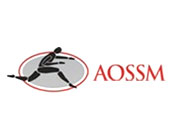Sports Medicine Injuries
Sports injuries occur when playing indoor or outdoor sports or while exercising. They can result from accidents, inadequate training, improper use of protective devices, or insufficient stretching or warm-up exercises. The most common sports injuries are sprains and strains, fractures and dislocations.
The most common treatment recommended for injury is rest, ice, compression and elevation (RICE).
- Rest: Avoid activities that may cause injury.
- Ice: Ice packs can be applied to the injured area, which will help reduce swelling and pain. Ice should be applied over a towel on the affected area for 15-20 minutes, four times a day, for several days. Never place ice directly over the skin.
- Compression: Compression of the injured area also helps reduce swelling. Elastic wraps, air casts and splints can accomplish this.
- Elevation: Elevate the injured part above your heart level to reduce swelling and pain.
Some of the measures that are followed to prevent sports-related injuries include:
- Follow an exercise program to strengthen the muscles.
- Gradually increase your exercise level and avoid overdoing the exercise.
- Ensure that you wear properly-fitted protective gear such as elbow guards, eye gear, facemasks, mouth guards and pads, comfortable clothes, and athletic shoes before playing any sports activity, which will help reduce the chances of injury.
- Make sure that you follow warm-up and cool-down exercises before and after the sports activity. Exercises will help stretch muscles, increase flexibility and reduce soft tissue injuries.
- Avoid exercising immediately after eating a large meal.
- Maintain a healthy diet, which will nourish the muscles.
- Avoid playing when you are injured or tired. Take a break for some time after playing.
- Learn all the rules of the game you are participating in.
- Ensure that you are physically fit to play the sport.
Some of the common sports injuries include:
Shoulder Injuries
Severe pain in your shoulders while playing your favorite sport, such as tennis, basketball and gymnastics, may be caused by a torn ligament or dislocation of the shoulder bone. This may result from overuse of your shoulder while playing sports. Simple pain or acute injuries may be treated with conservative treatment, while chronic injuries may require surgical treatment.
Knee Injuries
The anterior cruciate ligament (ACL) is major stabilizing ligament in the knee, which may tear with overuse while playing sports. The ACL has poor ability to heal and may cause instability. Other common sports injuries in the knee include cartilage damage and meniscal tear. Knee injuries during sports may require surgical intervention, which can be performed using open surgical or a minimally invasive technique. Your surgeon will recommend physical therapy to strengthen your muscles, and improve elasticity and movement of the bones and joints.
Foot and Ankle Injuries
Foot and ankle injuries include the injuries in the leg below the knee, and they are common in athletes and while playing sports such as football, hockey and skating. Common sports injuries to the foot and ankle include sprains and strains, ankle fractures, and Achilles tendinitis. Treatment for these conditions may include orthotics, braces, physical therapy, injections or surgery.
Sprains and Strains
What are Sprains and Strains?
Sprains and strains are injuries affecting the muscles and ligaments. A sprain is an injury or tear of one or more ligaments that commonly occurs at the wrist, knee, ankle or thumb. A strain is an injury or tear to the muscle. Strains occur commonly in the back and legs.
Causes of Sprains and Strains
Sprains and strains occur due to overstretching of the joints during sports activities and accidents such as falls or collisions. It may be due to fatigue or not warming up before an activity.
Symptoms of Sprains and Strains
Symptoms of sprains include:
- Pain
- Swelling
- Tenderness
- Bruising
- Joint stiffness
Symptoms of strains include
- Muscle spasm and weakness
- Pain in the affected area
- swelling
- Redness
- bruising
Immediate Care for Sprains and Strains
Immediately following an injury and before being evaluated by your doctor, you should initiate the P.R.I.C.E. method of treatment.
- Protection: Protect the injured area with the help of a support.
- Rest: Rest the affected area as more damage could result from putting pressure on the injury.
- Ice: Ice should be applied over a towel to the affected area for 15-20 minutes every two to three hours during the day. Never place ice directly over the skin.
- Compression: Wrapping with an elastic bandage or an elasticated tubular bandage can help to minimize the swelling and provide support to the injured area.
- Elevation: Elevating the injured area above heart level will also help with swelling and pain.
Diagnosis of Sprains and Strains
Diagnosis involves a thorough physical examination. Your doctor will inspect the area of injury and see how well you move the muscle or joint. X-rays or other tests may be ordered to rule out fractures or other problems.
Treatment of Sprains and Strains
Your doctor may prescribe nonsteroidal anti-inflammatory drugs to reduce the pain and inflammation of a sprain or strain. A period of bracing may be necessary. Physiotherapy may be recommended for moderate to severe injuries. Surgery is rarely needed but may be suggested for torn ligaments and tendons.
Most sprains and strains show significant improvement in about 2 weeks. Severe injuries sometimes take months to heal. Strenuous activity should be avoided for at least 8 weeks to allow proper healing.





